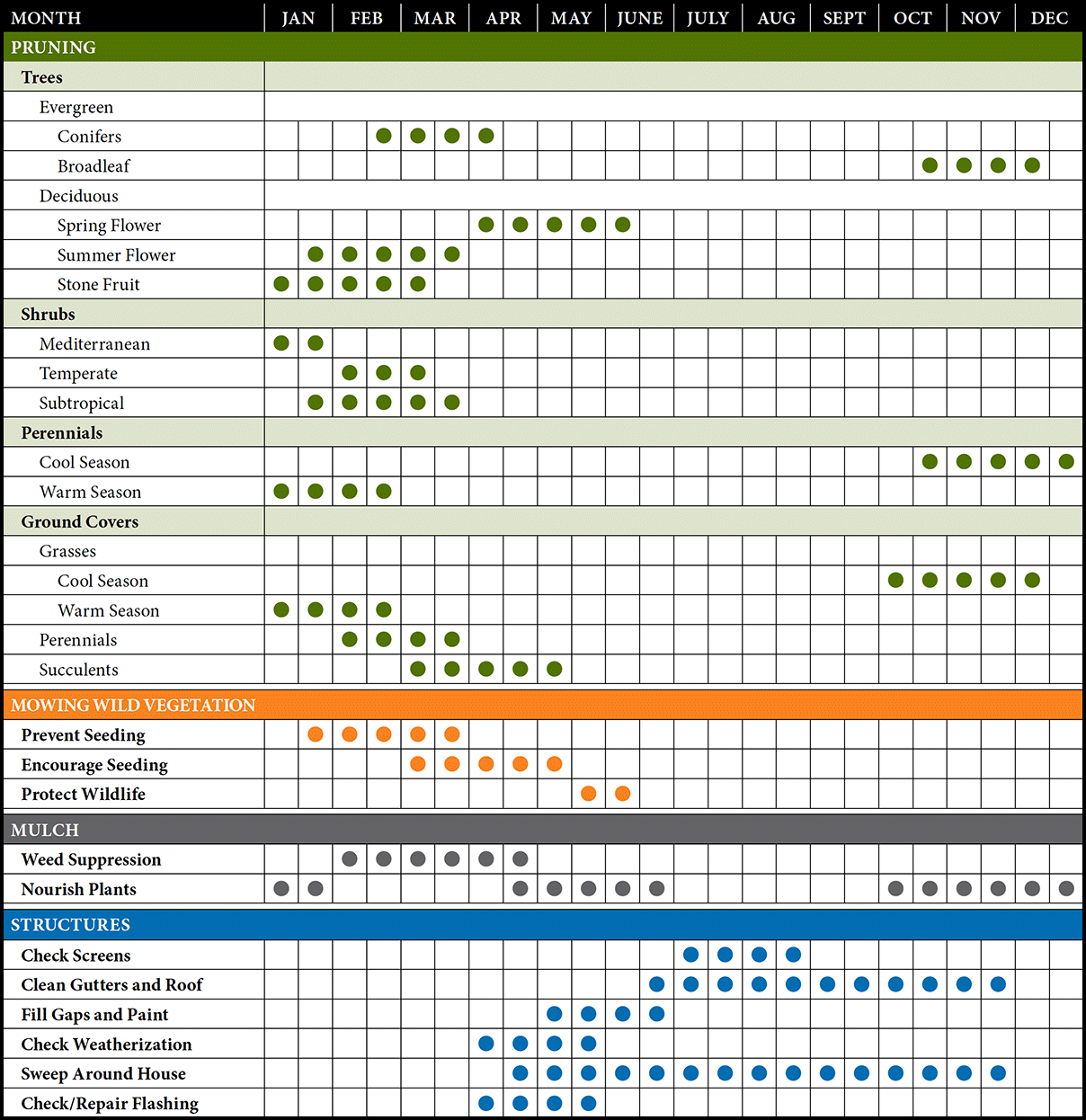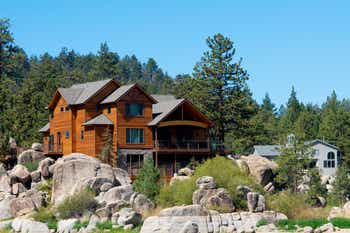Every plant, every garden and every house is flammable. The degree of their flammability is directly related to the maintenance they receive. Poor design, by either plan or plant selection, will increase the fire risk. However—and more likely than not—it has been a lack of maintenance that has led a wildfire to a house.
This article highlights maintenance priorities for people living in fire country and how to safely operate power equipment. It also provides a calendar that showcases the best times of year to prune, mow wild vegetation, mulch, and to tackle home maintenance.
A home is like a vehicle in the respect that it needs a tune up to handle the change in seasons. Take the time to maintain your property throughout the year, and remember that an important step is to contact an insurance agent to assess coverage before you suffer a loss.
Bonnie Lee
Vice President of Property Claims at Mercury Insurance
Firescaping’s Maintenance Priorities
- Maintain Emergency Access
- Maintain a Fire-Hardened Structure
- Clean the First 5 feet Around a Structure
- Clean and Nourish 30 feet Around a Structure
- Maintain Zones 2 and 3
- Help Your Community
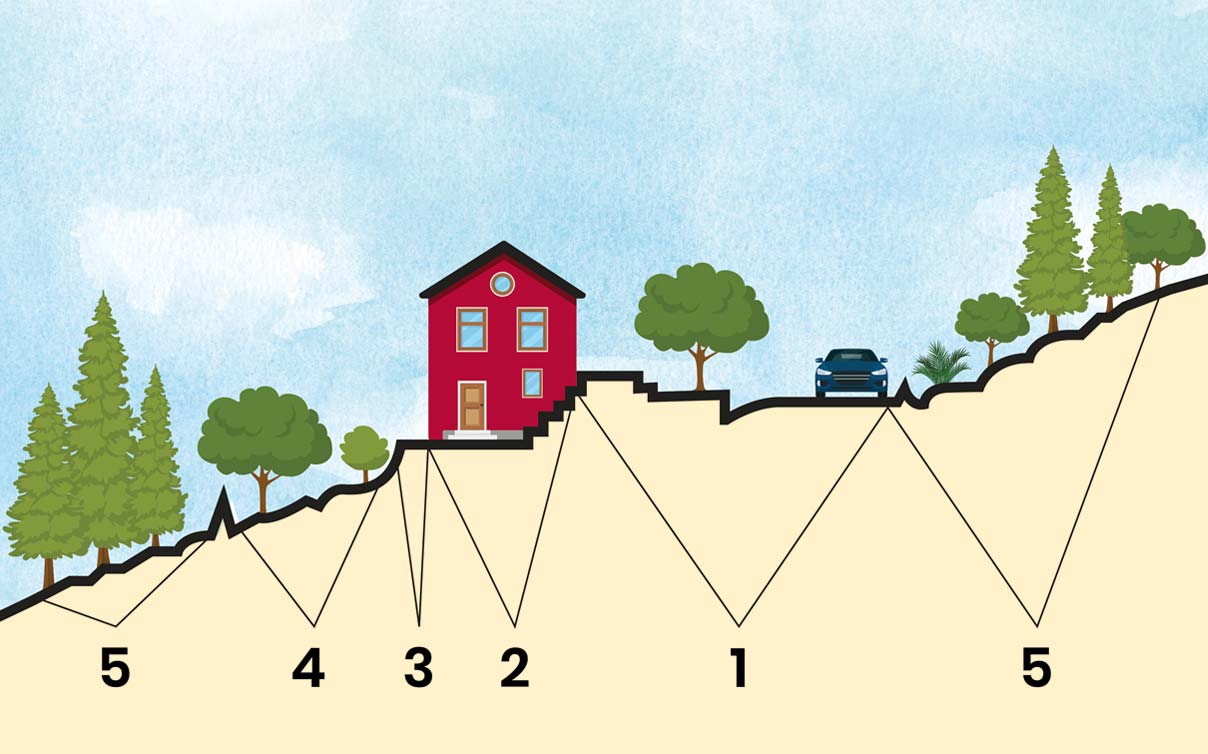
First things first—save your family, protect your structure, and help your community.
1. Maintain Emergency Access
Making sure you and your family can successfully flee is the foremost priority. The parts that you manage include the road in front of the property, the driveway, and paths around the house.
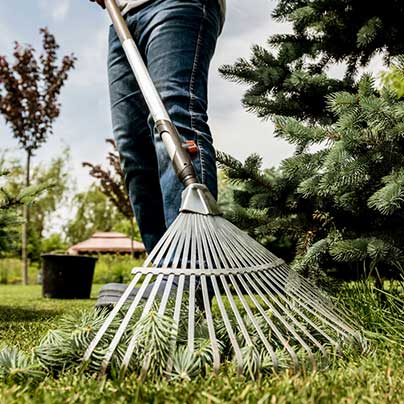
Remove flammable vegetation from 5 feet on either side.
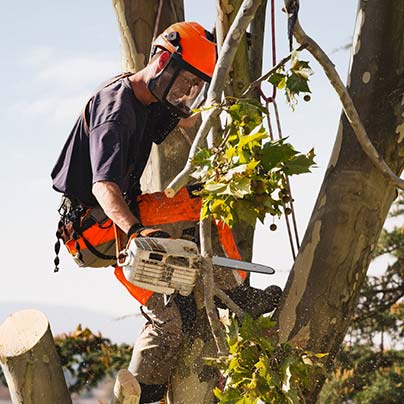
Prune overhead vegetation to maintain at least 10 feet clearance.
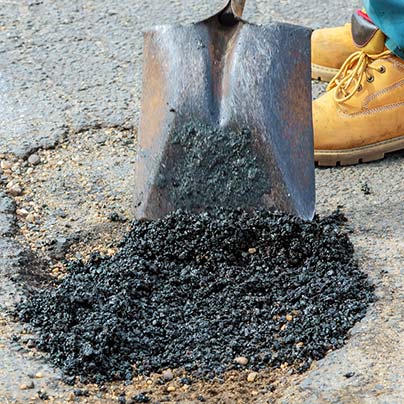
Fix or fill uplifting or depressing surfaces.
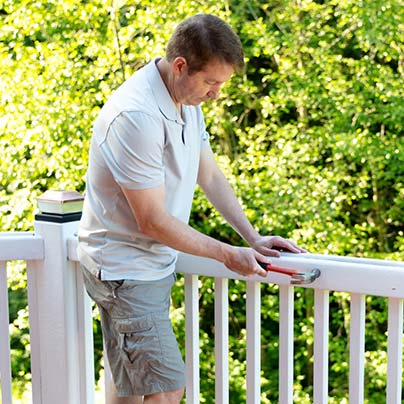
Repair, tighten, sand and paint handrails.
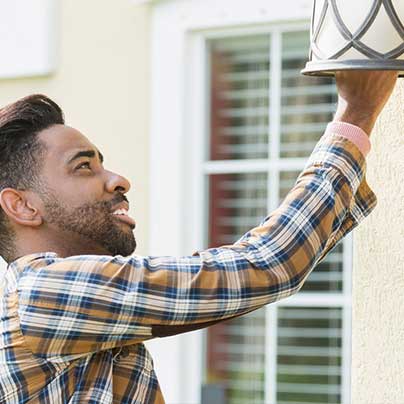
Check light bulbs in outdoor lighting.
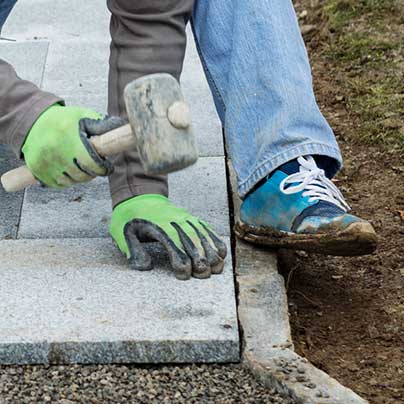
Maintain non-skid treatments on sloping paths.
2. Maintain a Fire-Hardened Structure
Regular maintenance cannot be understated—houses must be maintained to survive an assault by firebrands. Broken screens, peeling paint, surface cracks, gaps in flashing, and termites in wood all provide a firebrand with an opportunity to enflame a structure.
- Screens on attic vents and all other openings are inspected and replaced if necessary.
- Fissures and cracks on the siding wood are fixed and filled.
- Sand and paint aged and peeling stains and paints.
- Clean, fill gaps and paint undersides of eaves.
- Check and replace the weatherization around windows, doors and the garage door.
- Sweep leaves and dead material from roof, rain gutters and immediately around structure including under decks.
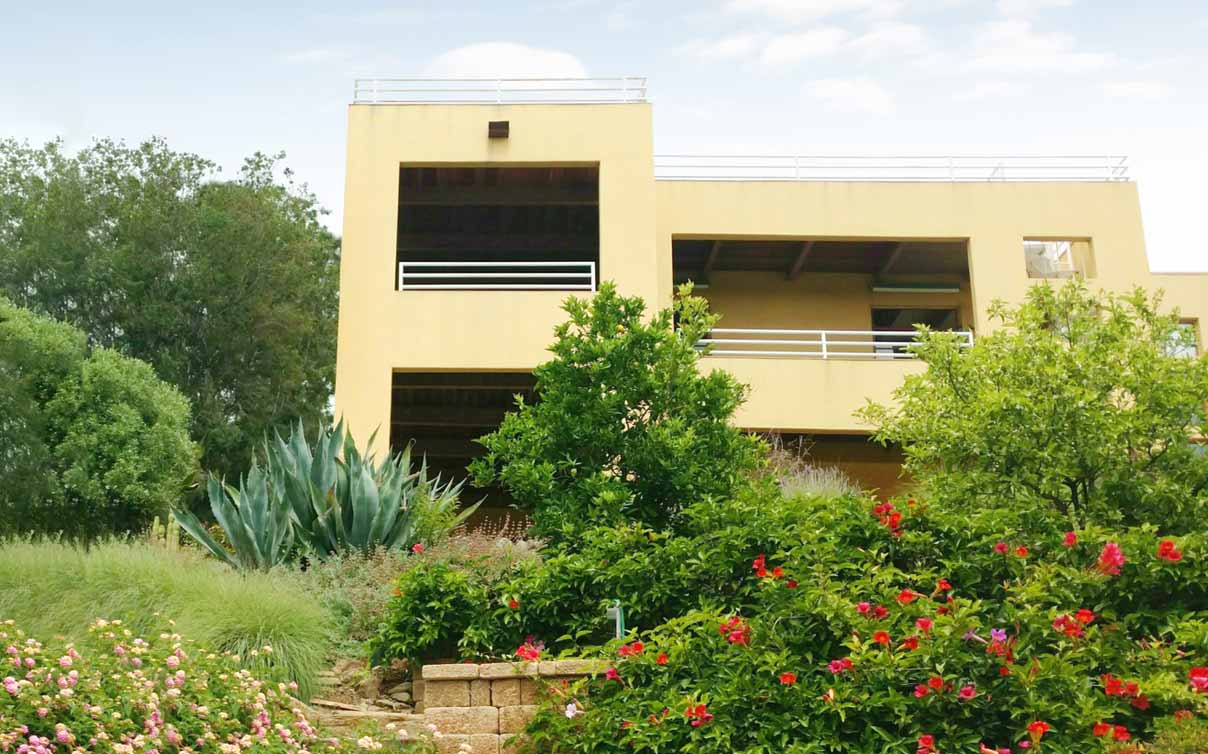
This house, along with its landscape, is well maintained and fire resistant.
3. Clean the First 5 feet Around a Structure
Many health experts claim that clutter increases stress and anxiety. In fire country this could not be truer. Clutter is the Achilles heel of a fire resistant home. Tools, trash, recyclables, stored wood, and toys are just some of the many ignitable items that are regularly stored against a structure. Clutter creates more than just stress—it creates an opportunity for a firebrand.
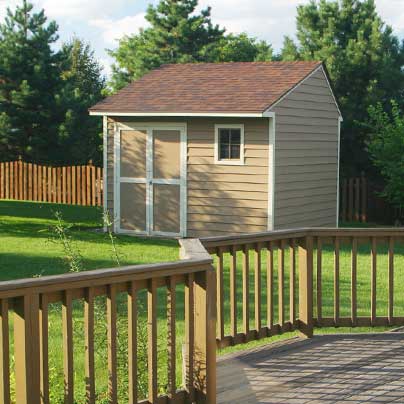
Remove the clutter: Items are either stored in the house, in a non-flammable shed, or 30 feet away from a house.
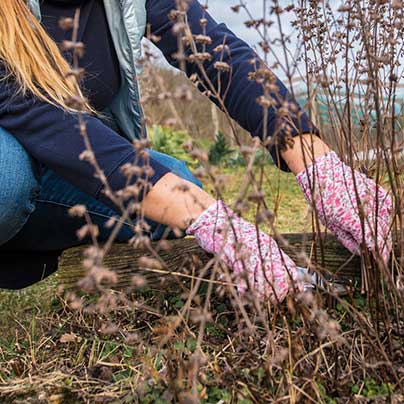
Prune and remove all dead, dying and diseased vegetation.
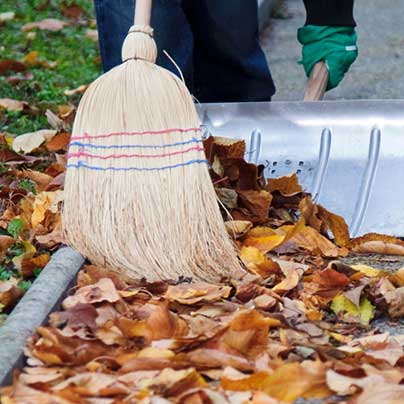
Sweep leaves and debris.
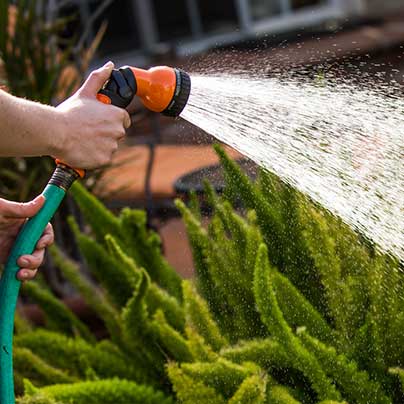
Irrigate plants around a house to ensure leaf moisture.
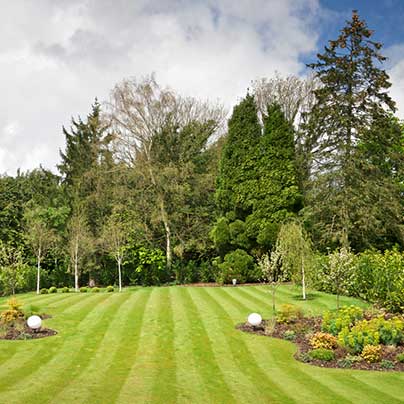
Limbs of trees and large shrubs are kept 15 feet from a structure and 10 feet above its roof.
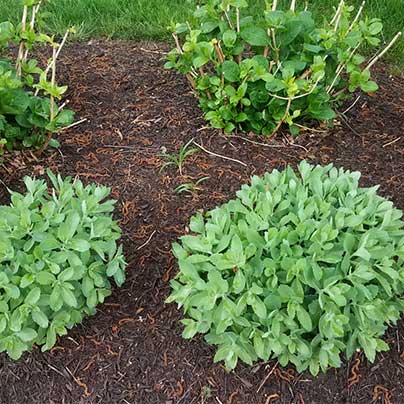
Ensure no dry woody mulches.
4. Clean and Nourish the Landscape 30 feet Around a Structure
The goal of Zone 1 is to extinguish firebrands and endure intense heat. Tasks include removal/replanting, managing weeds, maintaining efficient irrigation, caring for hedges, and managing terraces.
- Prune and remove all dead, dying and diseased vegetation.
- Sweep up leaves and debris.
- Paint, repair and replace landscape features, such as shade and play structures.
- Remove loose bark and companion plants, such as mistletoe and Spanish moss, from shrubs and trees.
- Cut all non-irrigated grasses to 4 inches.
- Remove flammable material and combustible ground covers at least 2 feet around the dripline of trees.
- Maintain proper distances between large islands of vegetation.
- Prevent ground covers and vines from scrambling up fences, shade structures, shrubs, trees and utility poles.
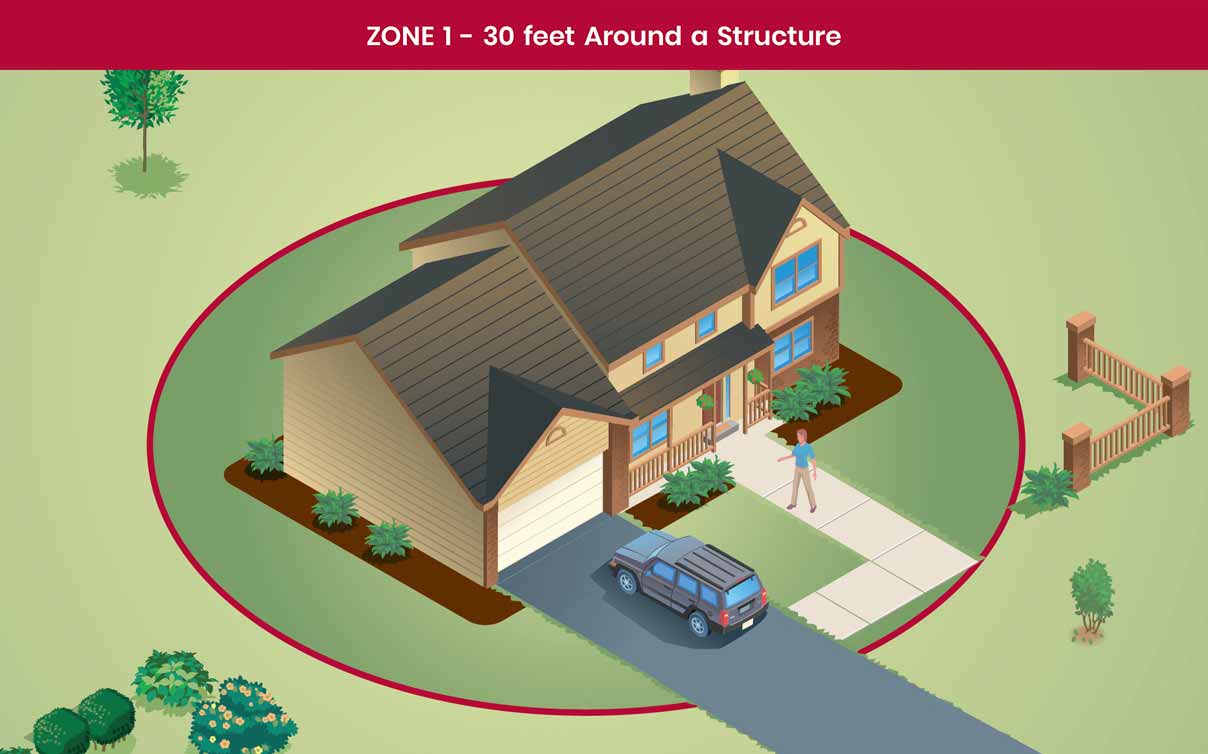
5. Maintain Zones 2 and 3
Zone 2 must stop a ground fire and Zone 3 dramatically slows it. Vegetation management is key in these zones and the outlying areas.
- Prune and remove all dead, dying and diseased vegetation.
- Remove flammable vegetation and debris from around LPG tanks, outbuildings, and woodpiles.
- Cut all non-irrigated grasses to 4 inches.
- Sweep up leaves and debris.
- Irrigate Zone 2 plants to ensure leaf moisture.
- Remove flammable material and combustible ground covers at least 2 feet around the dripline of trees.
- Maintain distance between shrubs and trees.
- Prevent ground covers and vines from scrambling up fences, shade structures, shrubs, trees and utility poles.
- Audit irrigation systems looking specifically for any signs of erosion (rills and gullies), overspray (circular stains), or regular runoff (algae in curbs).
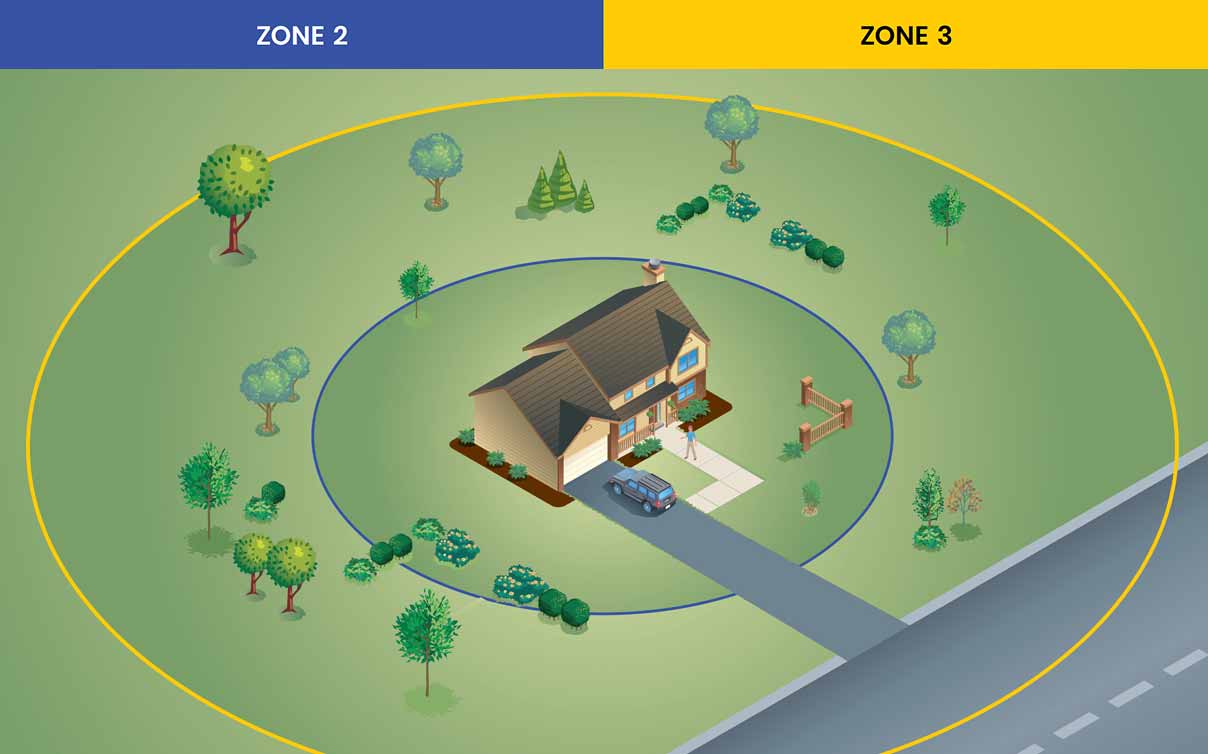
6. Help Your Community Manage Wildland Fuels
A community is comprised of far more than individual properties. It also includes public parks, abandoned properties, and easements, and all these landscapes and structures need care and management. Only a strong commitment to community protection by a large group of people will be able to reduce the risk for an entire area.
For a one-stop resource on maintaining landscapes—and one that’s free—download California Friendly: A maintenance guide for landscapers, gardeners and land managers (2017). This book covers the art of maintenance, including irrigation, plant care, pest management, weeding, and storm water management.
Download the entire book or individual chapters here.
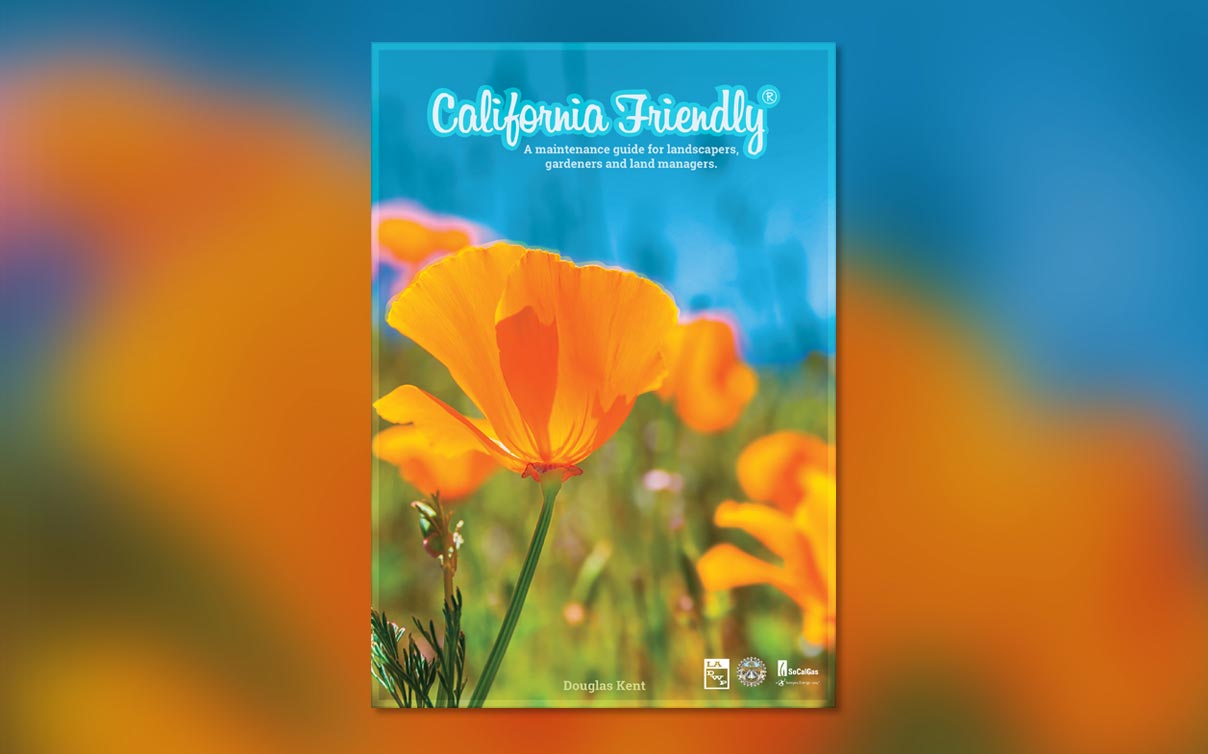
Safely Operating Power Equipment
One of the biggest and most persistent causes of wildfires is equipment use. Mowers, weed-whackers and chainsaws, along with many other machines, are a constant source of friction, heat and sparks. To avoid starting a fire while working with machinery, the following precautions should be taken:
- Put spark arresters on all exhaust ports and repair holes in existing systems and arrester.
- Check for a build-up of carbon in exhaust system and on spark plugs.
- Refuel only when the engine has cooled.
- Never lay a running or hot engine in grass or other ignitable vegetation.
- Bring a fire extinguisher to the work site.
- Avoid working past 10 a.m. during the fire season.
- Avoid all work that involves machinery during extreme fire weather conditions, those hot, dry, windy days.
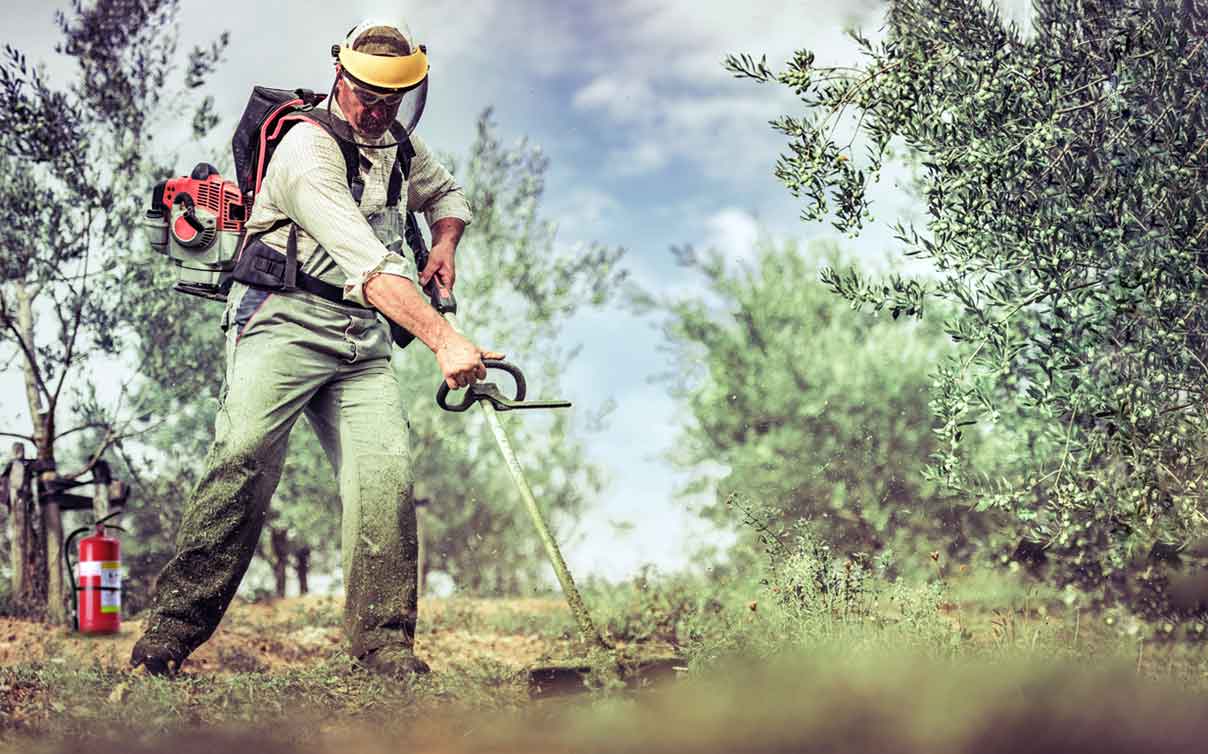
Thick coveralls, a facemask, gloves and sturdy boots means this individual is serious about personal safety. The board to lay hot equipment on and fire extinguisher means they are also serious about fire safety.
Calendar of Landscape Maintenance Tasks
